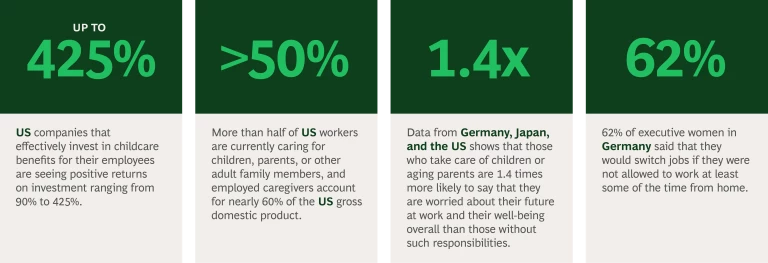Caregivers aren’t just parents of young children. They’re people caring for an ailing spouse, aging relatives, and grown children with disabilities. And let’s face it, women are disproportionately tasked with caregiving responsibilities, which makes them more vulnerable to interruptions in their career and less able to advance at equal rates. Companies need to step up and make caregiver support a top priority—not only because it’s the right thing to do, but because it delivers an advantage in the competition for talent.

What Can Employers Do to Support Working Caregivers?
The challenge of balancing work and caregiving is a perennial problem that became supercharged during COVID-19—and won't go away when the pandemic ends. In July 2021, when care options were reopening and vaccines were becoming readily available to younger children, our research found that nearly half of all caregivers were still worried about their future at work, as well as their overall well-being. So what can employers do to support caregivers? We have identified five ways to ease the burden on working caregivers.
- Know your working caregivers, recognize caregiver strain and burnout, and listen to caregivers’ needs.
- Offer the range of benefits and resources that working caregivers need, from everyday care support, including subsidies and funding, to emergency support and flexibility in when, how much, and where employees work.
- Embed and accelerate new ways of working, flexible work schedules, part-time options, and job sharing to help employees balance work and caregiving.
- Ensure that taking advantage of flexibility options does not hinder career advancement
- Foster a culture of openness and inclusion and elevate senior role models who highlight work-life balance for caregivers.
Building a Care Economy: BCG's Emily Kos and Other Leaders on Why Investing Today Will Create a Virtuous Cycle of Prosperity
Learn More
Our Insights on Working Caregivers








Our Experts on Working Caregivers



See More Experts


Ashley Dartnell





